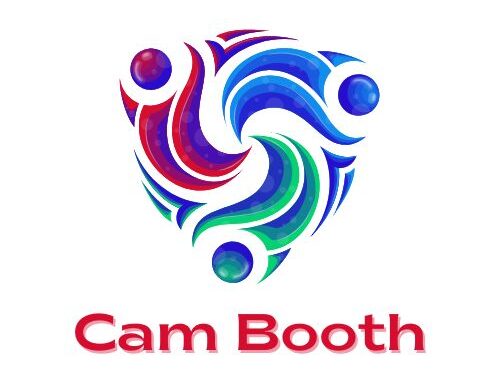The cash conversion cycle (CCC) is a fundamental metric every business owner, financial analyst, and operations manager should understand. It offers critical insights into how efficiently a company manages its working capital and cash flow. By learning to calculate and interpret CCC, you’ll better understand how long it takes to convert your investments in inventory and other resources into cash.
This guide will walk you through the concept of the cash conversion cycle, provide a simple step-by-step breakdown of how to calculate it, and explain why it’s essential for your business’s financial health.
What Is the Cash Conversion Cycle?
The cash conversion cycle (CCC) is a metric used to measure the time it takes for a business to turn its inventory investment into cash. It considers three key stages in the working capital cycle:
- Inventory Conversion Period – The time it takes to turn raw materials or inventory into finished goods and then sell them.
- Receivables Collection Period – The average number of days needed to collect payment from customers after invoicing them.
- Payables Payment Period – The time it takes to pay your suppliers after purchasing goods or services.
The CCC is expressed in days and helps businesses understand how efficiently they’re managing cash flow. A shorter CCC indicates that a company cycles its cash quickly, which can improve liquidity and free up cash for growth or other investments. On the other hand, a longer CCC may reveal cash flow challenges or inefficiencies in operations.
Why Is the Cash Conversion Cycle Important?
Understanding and monitoring the CCC is critical for several reasons:
- Improves Liquidity – By reducing the time required to convert inventory into cash, businesses ensure they have more funds available for reinvestment.
- Minimizes Financing Costs – A lower CCC reduces the need to borrow money to cover short-term operating expenses.
- Enhances Operational Efficiency – The CCC can highlight areas where efficiency improvements—like faster inventory turnover—are needed.
- Supports Decision-Making – Helps stakeholders make informed decisions about future growth, investments, and pricing strategies.
Now that we’ve outlined what the cash conversion cycle is and why it’s valuable, here’s how to calculate it for your business.
The Cash Conversion Cycle Formula
The CCC formula combines three variables for calculation:
CCC = (Days Inventory Outstanding) + (Days Sales Outstanding) – (Days Payables Outstanding)
Let’s break these components into manageable steps.
Step 1: Calculate Days Inventory Outstanding (DIO)
Days Inventory Outstanding (DIO) measures how many days, on average, it takes to sell the inventory.
The formula is as follows:
DIO = (Average Inventory ÷ Cost of Goods Sold) × 365
- Average Inventory = (Starting Inventory + Ending Inventory) ÷ 2
- Cost of Goods Sold (COGS) – This figure can be found on your income statement.
Example
If your starting inventory is $100,000 and ending inventory is $120,000, your average inventory is $110,000. Assuming your annual COGS is $500,000, the calculation would look like this:
DIO = ($110,000 ÷ $500,000) × 365 = 80.3 days
This means it takes around 80 days to turn your inventory into sales.
Step 2: Calculate Days Sales Outstanding (DSO)
Days Sales Outstanding (DSO) indicates the average time it takes to collect payment after a sale.
DSO = (Average Accounts Receivable ÷ Total Credit Sales) × 365
- Average Accounts Receivable = (Starting Receivables + Ending Receivables) ÷ 2
- Total Credit Sales – This value can be found in your financial reports.
Example
If starting receivables are $50,000 and ending receivables are $70,000, your average accounts receivable would be $60,000. Assuming total credit sales of $600,000:
DSO = ($60,000 ÷ $600,000) × 365 = 36.5 days
This indicates it takes about 37 days to collect payments from your customers.
Step 3: Calculate Days Payables Outstanding (DPO)
Days Payables Outstanding (DPO) measures the average time your business takes to pay its suppliers.
DPO = (Average Accounts Payable ÷ COGS) × 365
- Average Accounts Payable = (Starting Payables + Ending Payables) ÷ 2
Example
If starting payables are $30,000 and ending payables are $50,000, your average accounts payable is $40,000. With COGS at $500,000:
DPO = ($40,000 ÷ $500,000) × 365 = 29.2 days
This means your business takes about 29 days to pay suppliers.
Step 4: Plug the Variables into the CCC Formula
Now that we’ve calculated DIO, DSO, and DPO, we can plug them into the CCC formula:
CCC = DIO + DSO – DPO
For our example:
CCC = 80.3 + 36.5 – 29.2 = 87.6 days
The cash conversion cycle for this business is approximately 88 days. This means it takes almost three months for the business to convert its investment in inventory into cash.
How to Interpret Your CCC
- Shorter CCC – Indicates efficient cash management. Your business quickly converts inventory to cash without delaying receivables or extending payables.
- Longer CCC – Suggests inefficiencies in inventory management, slow customer payments, or potentially paying suppliers too quickly.
- Negative CCC – A rare yet positive scenario where payments from customers are collected before the business pays its suppliers (e.g., in certain retail or subscription models).
Strategies to Optimize Your Cash Conversion Cycle
Want to improve your CCC? Here are some actionable strategies:
- Optimize Inventory Turnover – Implement demand forecasting and inventory management techniques to reduce overstocking.
- Encourage Faster Payments – Offer early payment discounts to customers or tighten credit terms.
- Negotiate Supplier Terms – Extend payment terms (e.g., from 30 days to 60 days) with suppliers wherever possible.
- Automate Processes – Use accounting and inventory management software to improve efficiency.
Leverage Your CCC for Business Growth
Monitoring and optimizing your cash conversion cycle can significantly impact your business’s financial health. By shortening your CCC, you’ll free up working capital, lower borrowing costs, and increase financial flexibility—all essential for scaling your business.
Understanding and improving your CCC is not a one-time exercise; it’s an ongoing process that evolves based on your business’s needs and market conditions. Equipped with this knowledge, you’re in a stronger position to build a more resilient and efficient business.
FAQs
What is the Cash Conversion Cycle (CCC)?
The Cash Conversion Cycle (CCC) is a financial metric that measures the time it takes for a company to convert its investments in inventory and other resources into cash flow from sales. It evaluates the efficiency of a business’s operations and cash management.
Why is it important to optimize the CCC?
Optimizing your CCC is crucial because it directly impacts your cash flow, working capital, and overall financial flexibility. A shorter CCC means your business can quickly turn investments into cash, reduce borrowing needs, and be better prepared for growth opportunities.
What are the main components of the CCC?
The CCC is composed of three main components:
- Days Inventory Outstanding (DIO) – The average number of days it takes to sell inventory.
- Days Sales Outstanding (DSO) – The average number of days it takes to collect payments after a sale.
- Days Payable Outstanding (DPO) – The average number of days it takes to pay suppliers.
How can I improve my CCC?
Improving your CCC involves strategies like reducing inventory holding times, expediting customer payments, and leveraging favorable supplier payment terms. Regularly monitoring your CCC and making adjustments based on business needs and market conditions is essential.
Can any business benefit from optimizing the CCC?
Yes, businesses of all sizes and industries can benefit from optimizing their CCC. Efficient cash flow management is critical for maintaining financial health, ensuring operational efficiency, and enabling sustainable growth.







